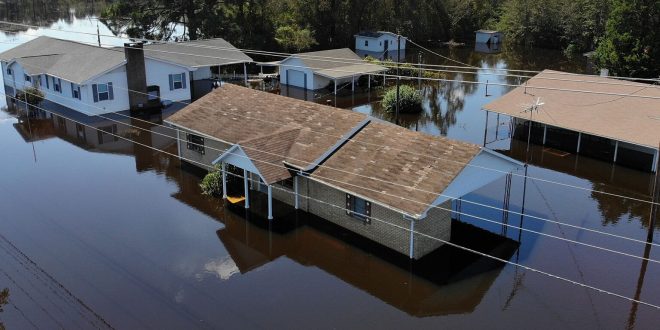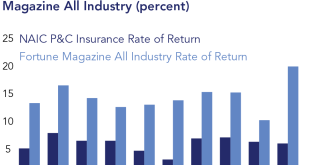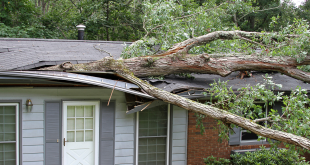Rising Frequency and Intensity of Extreme Weather
Look around – have you noticed that crazy weather seems to be the new normal? We’re talking about more hurricanes, bigger wildfires, and floods that seem to pop up out of nowhere. It’s not just a feeling; the data backs it up. These extreme weather events are becoming more frequent and, well, more extreme. And it’s not just about the inconvenience; it’s hitting homeowners hard in their wallets. Makes you wonder what’s next, right?
Impact on Insurance Claims and Payouts
So, all this extreme weather leads to one thing: a surge in insurance claims. More claims mean bigger payouts for insurance companies. And guess who ends up footing the bill? Yep, you do. As insurers shell out more money to cover damages from climate-related disasters, they’re going to adjust premiums to compensate for these losses. I mean, it’s business, right? But it still stings when you see that bill go up. It almost makes you want to move to a place where the weather is boring. Almost.
Regional Variations in Climate Risk
Now, here’s a thing: climate risk isn’t the same everywhere. If you live near the coast, you’re probably sweating about hurricanes and rising sea levels. In the West, wildfires might be your biggest worry. And if you’re in the Midwest, well, you might be dealing with increasingly intense storms and floods. Insurance companies know this, which means your premiums are going to reflect the specific risks in your area. It kind of feels like a lottery nobody wants to win, doesn’t it?
How Climate Change is Reshaping Homeowners Insurance Policies
Increased Premiums and Deductibles
Brace yourself: the most immediate impact you’ll likely notice is higher premiums. Insurers are upping the costs to cover the increased risk. And it’s not just the monthly payment; deductibles are going up too. That means you’ll have to pay more out of pocket before your insurance kicks in. It’s like they’re saying, “Hey, we’ll cover you, but you gotta chip in a bit more upfront.” Fair? Maybe. Annoying? Definitely.
Changes in Coverage Options and Exclusions
Here’s where things get a little tricky. Some insurance companies are starting to limit coverage in areas that are considered high-risk. They might exclude certain types of damage, like flooding or wind damage from hurricanes. Or they might offer less coverage than they used to. It’s crucial to read the fine print and understand exactly what your policy covers – and what it doesn’t. Otherwise, you might find yourself in a sticky situation when you actually need to file a claim. And nobody wants that surprise, trust me.
The Rise of Climate-Specific Insurance Products
On the flip side, we’re also seeing the emergence of new insurance products designed specifically to address climate-related risks. Think flood insurance (which, let’s be honest, everyone near water should probably have), or specialized policies that cover wildfire damage. These climate-specific insurance products can provide extra protection, but they also come with their own set of costs and considerations. It’s a bit like buying a warranty for your toaster – do you really need it? Maybe. But it depends on how much you love toast, I guess.
Navigating the Homeowners Insurance Market in a Changing Climate
Assessing Your Property’s Climate Risk
Okay, so what can you actually do about all this? First, figure out how much risk you’re actually facing. Are you in a flood zone? Is your area prone to wildfires? There are plenty of online tools and resources that can help you assess your property’s climate risk. Knowledge is power, after all. And knowing what you’re up against is the first step in protecting yourself.
Understanding Your Insurance Policy’s Coverage
Seriously, read your insurance policy. I know, it’s about as exciting as watching paint dry, but it’s super important. Understand what’s covered, what’s excluded, and what your deductibles are. If you have questions, call your insurance agent and ask them to explain it to you in plain English. Don’t be afraid to be a pain in the neck. It’s their job to make sure you understand what you’re paying for.
Shopping Around and Comparing Quotes
Don’t just stick with the first insurance company you find. Shop around and compare quotes from multiple providers. Prices can vary widely, and you might be able to find a better deal if you do your homework. Plus, different companies may offer different coverage options, so it’s worth exploring your options. It’s like car shopping – you wouldn’t buy the first one you see, would you? (Okay, maybe some people would, but you shouldn’t!)
Mitigation and Adaptation Strategies for Homeowners
Investing in Home Improvements to Reduce Risk
Consider making some home improvements to reduce your risk. This could include things like installing hurricane shutters, reinforcing your roof, or clearing brush around your property to prevent wildfires from spreading. These improvements might cost money upfront, but they could save you a lot of money in the long run – not to mention, protect your home and family.
Implementing Water Management Techniques
If flooding is a concern, think about implementing water management techniques around your property. This could include things like installing French drains, grading your yard to direct water away from your foundation, or even planting trees and shrubs to absorb excess water. Every little bit helps, right? Plus, you get to play in the dirt. Always a bonus.
Exploring Community-Based Resilience Initiatives
Sometimes, the best solutions are the ones we come up with together. Look into community-based resilience initiatives in your area. These might include things like neighborhood watch programs, community gardens, or even shared resources for disaster preparedness. There’s strength in numbers, and working together can make everyone more resilient.
The Future of Homeowners Insurance: What to Expect
Technological Innovations in Risk Assessment
The insurance industry is starting to use new technologies to assess risk more accurately. Things like drones, satellite imagery, and sophisticated data analytics are helping insurers get a better picture of the risks facing individual properties. This could lead to more personalized insurance policies and, hopefully, more fair pricing.
The Role of Government and Policy
Government policies and regulations play a big role in the homeowners insurance market. Things like building codes, flood zone maps, and disaster relief programs can all impact the availability and affordability of insurance. Stay informed about these policies and advocate for solutions that protect homeowners in your community.
The Importance of Proactive Planning and Adaptation
Ultimately, the most important thing you can do is be proactive. Plan ahead, assess your risks, and take steps to protect your property. Adapt to the changing climate by making smart choices about where you live, how you build, and what kind of insurance you buy. The future is uncertain, but with a little planning and preparation, you can weather the storm – literally and figuratively.
So, yeah, the whole homeowners insurance landscape is shifting thanks to climate change. It’s a bit scary, I know, but also kind of a call to action, right? The key is to stay informed, take proactive steps, and maybe, just maybe, we can navigate this new world without losing our shirts. And hey, maybe we can even convince those insurance companies to be a little more understanding. Just a thought! Now, go forth and insure wisely!
 seeme
seeme




